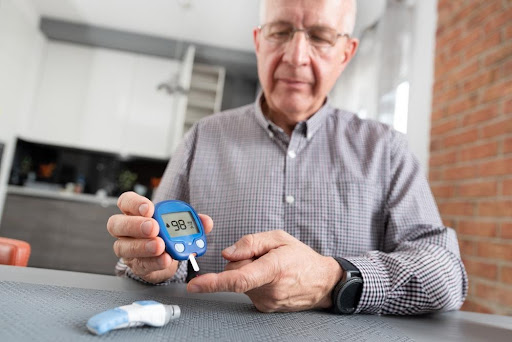Taking care of someone is a big responsibility, and this is only magnified if they have a chronic condition to manage such as diabetes. However, don’t be daunted by caring for someone with diabetes. Once you get into a routine, it’s not so overwhelming. Here are six caretaking tips to help your loved one or client who is coping with diabetes:
Educate yourself about diabetes.
It’s hard to be a caretaker of someone with diabetes if you don’t know anything about diabetes yourself. If you don’t already have experience with caring for people with diabetes, then seek out information about this condition from trusted sources. If you help take your loved one or client to their doctor’s appointments, that will also be a great place for you to learn more information about diabetes and care for them. Don’t be afraid to ask the doctors, nurses, dietitians or other medical professionals questions about diabetes if you get the opportunity. Not only will they know about diabetes as a whole, they will also have information about your patient’s specific medical history that might be beneficial.
Get to know their daily routine.
Most diabetics already have a daily routine in place that is designed to manage their diabetes. This is especially true if diabetes is something that they have been coping with for years. Ask them about their daily and weekly routines and their coping strategies for diabetes. Depending on your patient, they might not need much help with it at all, or only need the occasional reminder or check-in. Others will need you to take a much more active role in their diabetes management, anything from giving them medications at the right time each day to researching and preparing meals that will help keep their blood sugar levels in check. Your level of involvement may also change over time if their functioning begins to decline, so stay alert for this.

Help them maintain independence where possible.
Diabetes is common in older adults. In fact, type 2 diabetes often first begins occurring in middle age and older age. As a result, it’s very likely that someone you are caring for who has diabetes is also aging. Aging comes with its own challenges, and one of them is the loss of independence. Both aging and having diabetes can also make people feel like their bodies are out of their control, which is very tough to navigate. While it can be tempting to sweep in and take care of everything for them, this can actually make them feel helpless and demoralized. Instead, try to help them maintain independence where they can, whether it’s helping them wear regular clothes instead of a hospital gown or letting them play a role in meal planning. Even the little things really do make a big difference.
Learn diabetes-friendly meals.
One of the biggest factors in managing diabetes is diet. What someone eats day to day and even hour to hour plays a huge role in blood sugar levels, which is why it’s critical to feed them a balanced diet. As a caretaker, you will probably play a big role in meal planning and prep for your client or loved one, which means that you will be at least partly responsible for helping them to keep their blood sugar in check through balanced meals. Seek out guidance on diabetic-friendly meals, especially keeping their consumption of sugar and refined carbohydrates low. If they take medication with meals, that will also affect how much glucose they should be getting from their food, so bear that in mind when meal planning.

Help them with skin checks.
Diabetes has been linked to loss of feeling because uncontrolled high blood sugar can lead to nerve damage (a.k.a. diabetic neuropathy) and a weakening of capillaries. As a result, it’s possible for diabetics to get cuts, ulcers and other problems on their skin — but not feel it. This is why doing a daily skin check is so important, to check any cuts or bruises before they can become infected or get worse. Either give them a handheld mirror, or examine the places they can’t see. Make a note of any cuts, calluses, blisters and other skin lacerations, even if they are extremely small. Because diabetics are not always able to feel these cuts, they may inadvertently aggravate them, causing them to get worse. Clean any cuts at least once a day and pay special attention to them to make sure they are healing.
Encourage good foot health.
Feet are particularly vulnerable to diabetic neuropathy. Not only are they the body parts located farthest from the heart — meaning that they are the first to be affected by circulation issues — they also take a beating through standing and walking. People with diabetes are encouraged to wear diabetic footwear at all times, even in their own homes, to prevent damage to their feet. You should also help them carefully examine their feet (including in between their toes) every day to check for damage. If they are trying out some new shoes for swollen feet, have them wear the shoes for just one to two hours at a time and then add an hour or two until they work up to a full day. Check their feet for blisters, rubbed skin and other problems every time they take the shoes off.
Learning a few basics about diabetes will go a long way towards leveling up your caretaking skills and helping your client or loved one to have the best quality of life possible. These six simple tips are a great place to start if you’re wondering how to care for those with diabetes. Let us know of any others that you can think of in the comments!










